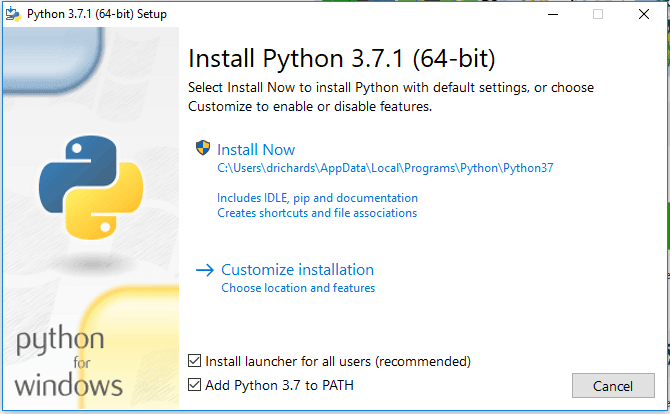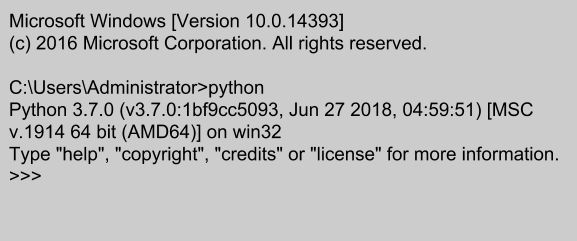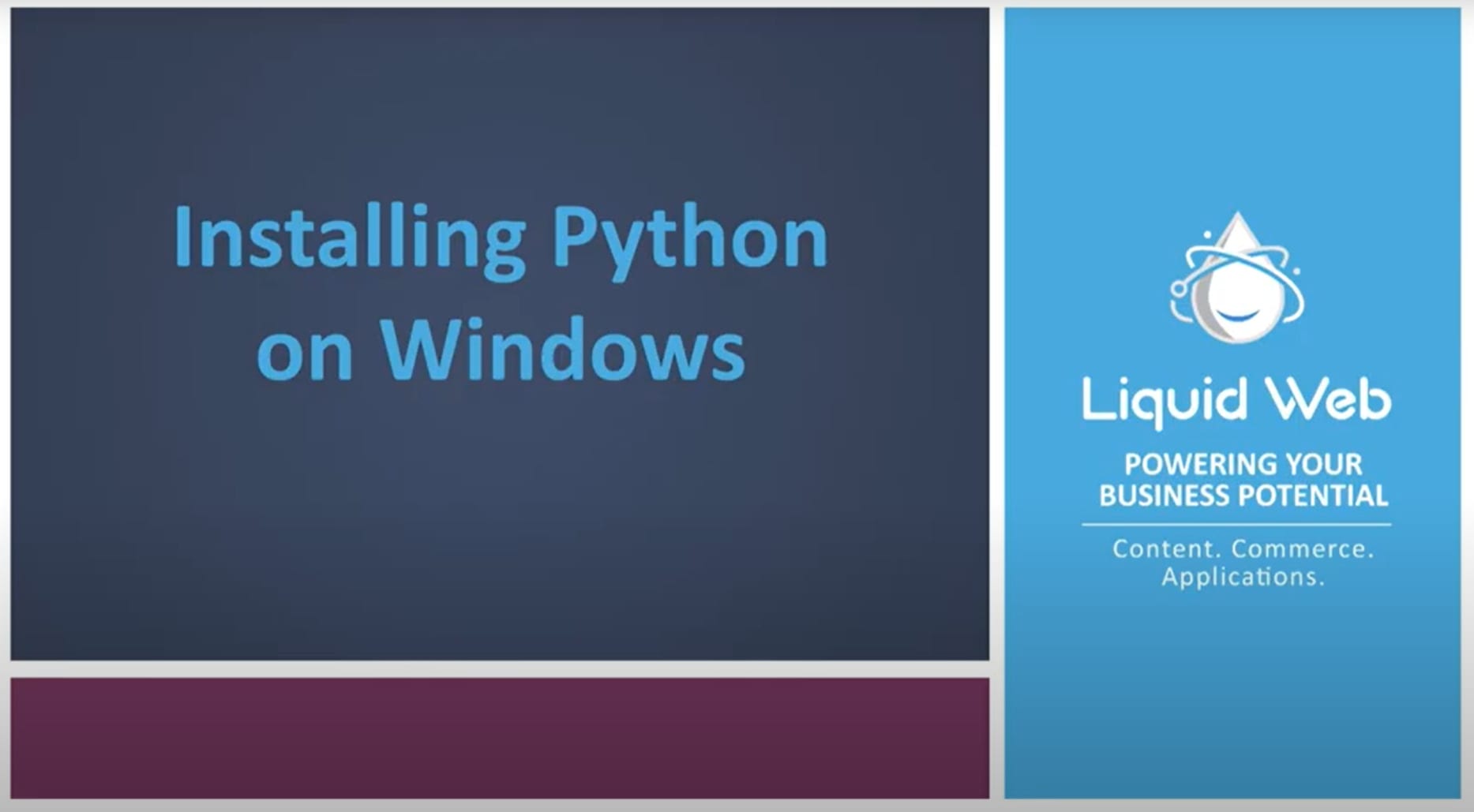How to Install Python on Windows

Python is a popular programming language for developing applications. The Python design philosophy emphasizes code readability and focuses on clear programming for both small and large-scale projects. Python allows you to run modules and full applications from a large library of resources (or even applications you write yourself) on your server. Python works on a number of popular operating systems, including Windows Server OS.
Installation of Python on the Windows Server operating system is a simple matter of downloading the installer from Python.org and running it on your server. Additional configuration adjustments can make using Python easier.
Installing Python
Step 1.
Log in to your server via Remote Desktop Protocol (RDP). For more information on using RDP, see Using Remote Desktop Protocol (RDP) to Log into Your Windows Server.
Step 2.
Download and execute the latest Python installation package from Python.org. For Liquid Web servers, you’ll most likely want the 64-bit version of the installer, but you may want to discuss software requirements with your developer.
Step 3.
Choose the recommended installation options for the simplest installation experience (You can also choose Customize Installation if you need to adjust locations or features, but this may require additional configuration. See Python.org for further instructions on custom installation options).
Step 4.
Check the box for “Add Python 3.7 to PATH”. This will adjust your System Environment Variables automatically so that Python can be launched from any command prompt.

Step 5.
Verify a successful installation by opening a command prompt window in your Python installation directory (probably C:\Users\*yourusername*\AppData\Local\Programs\Python\Python37 if you’ve installed the latest available version). You should receive a message similar to what is shown below.

If you selected “Add Python 3.7 to PATH”, you can verify the installation from any command prompt window.
Installing PIP
If you didn’t install PIP using the default settings in the installer, you’d want to install this program to make application and module management easier. You can verify PIP installation by opening a command prompt and entering the following command.
pip -VYou will see the output similar to the following:

If PIP is not installed or for more information on installing PIP, see our article How to Install PIP on Windows.
Any core-managed server at Liquid Web, both traditional-dedicated and Cloud servers, can run Python once installed. If you need assistance, our Helpful Humans can help install and verify the installation. You can also install Python on any of our self-managed servers. Plesk fully-managed servers support Python through ActiveState Python 2.6.5. Plesk also supports full Python installations but does not include the software in its default components. Please contact our Solutions team if you have further questions about ordering a server that can support Python.
Talk to a Specialist Now!
We pride ourselves on being The Most Helpful Humans In Hosting™!
Our Support Teams are filled with experienced Linux technicians and talented system administrators who have intimate knowledge of multiple web hosting technologies, especially those discussed in this article.
Should you have any questions regarding this information, we are always available to answer any inquiries with issues related to this article, 24 hours a day, 7 days a week 365 days a year.
If you are a Fully Managed VPS server, Cloud Dedicated, VMWare Private Cloud, Private Parent server, Managed Cloud Servers, or a Dedicated server owner and you are uncomfortable with performing any of the steps outlined, we can be reached via phone @800.580.4985, a chat or support ticket to assisting you with this process.
Related Articles:

About the Author: David Richards
David Richards has been an educator, a Technology Director, and now a Technical Writer for 20+ years. He’s an English major with a love for technology and helping others find ways to use technology more effectively. In his free time, Dave loves to read, play games, and spend time with his family.
Our Sales and Support teams are available 24 hours by phone or e-mail to assist.
Latest Articles
In-place CentOS 7 upgrades
Read ArticleHow to use kill commands in Linux
Read ArticleChange cPanel password from WebHost Manager (WHM)
Read ArticleChange cPanel password from WebHost Manager (WHM)
Read ArticleChange the root password in WebHost Manager (WHM)
Read Article



